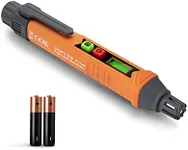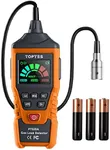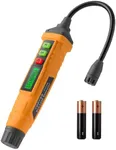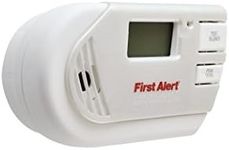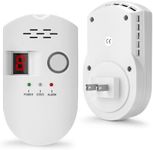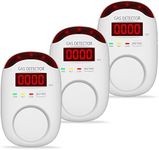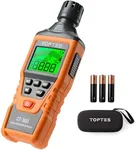Buying Guide for the Best Natural Gas Leak Detectors
Choosing the right natural gas leak detector is crucial for ensuring the safety of your home or workplace. These devices are designed to detect the presence of natural gas and alert you before it reaches dangerous levels. When selecting a natural gas leak detector, it's important to consider several key specifications to ensure you get a device that meets your needs and provides reliable performance.SensitivitySensitivity refers to the detector's ability to detect low levels of natural gas. This is important because early detection can prevent dangerous situations. Sensitivity is usually measured in parts per million (ppm). Detectors with higher sensitivity can detect smaller amounts of gas, which is ideal for environments where even a small leak could be hazardous. For general home use, a sensitivity of around 50 ppm is typically sufficient, while more sensitive detectors (10-20 ppm) are better for industrial or high-risk areas.
Response TimeResponse time is the amount of time it takes for the detector to alert you after detecting gas. This is crucial for safety, as a faster response time means you can take action more quickly. Response times can vary from a few seconds to a few minutes. For most home applications, a response time of under 30 seconds is adequate. In high-risk environments, a response time of under 10 seconds is preferable.
Power SourceThe power source of a natural gas leak detector can affect its reliability and convenience. Detectors can be battery-operated, plug-in, or hardwired. Battery-operated detectors are portable and can be placed anywhere, but require regular battery changes. Plug-in detectors are easy to install and don't require battery changes, but need to be near an outlet. Hardwired detectors are the most reliable as they are connected directly to your home's electrical system, but they require professional installation. Choose a power source based on your preference for convenience and reliability.
Alarm TypeThe alarm type refers to how the detector alerts you to the presence of gas. Common alarm types include audible alarms, visual indicators (like flashing lights), and even smartphone notifications. Audible alarms are essential for immediate awareness, especially if you are not looking at the detector. Visual indicators can be helpful in noisy environments where an audible alarm might not be heard. Smartphone notifications are useful if you want to be alerted even when you are not at home. Consider your environment and how you are most likely to notice an alert when choosing the alarm type.
Installation LocationThe location where you install your natural gas leak detector can impact its effectiveness. Detectors should be placed near potential sources of gas leaks, such as gas appliances, furnaces, and gas lines. It's also important to install them at the correct height, as natural gas is lighter than air and tends to rise. For most effective detection, place the detector about a foot below the ceiling or near the ceiling in rooms with high ceilings. Consider the layout of your home or workplace and place detectors in areas where gas leaks are most likely to occur.
Additional FeaturesSome natural gas leak detectors come with additional features that can enhance their functionality. These may include digital displays showing gas concentration levels, self-testing capabilities, and connectivity with smart home systems. Digital displays can provide real-time information about gas levels, which can be useful for monitoring and taking preventive measures. Self-testing ensures the detector is functioning properly without manual checks. Smart home connectivity allows for integration with other safety systems and remote monitoring. Consider which additional features might be beneficial for your specific needs and environment.

